Spruce up your home with these festive alternatives.
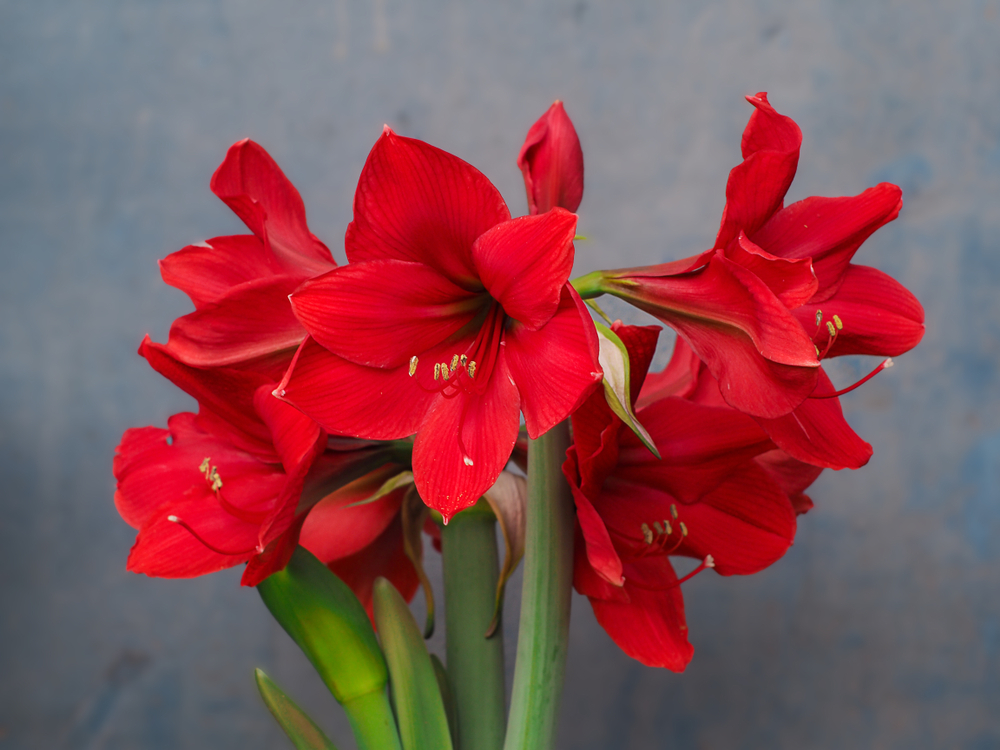
The poinsettia is no doubt a botanical trademark of Christmas. The crimson red bloom has religious roots in the yuletide season, as its long pointed petals give it a shape reminiscent of the biblical star of Bethlehem. And an old Mexican legend maintains that a poor girl left weeds for baby Jesus at her Christmas Eve church service, which then transformed into poinsettias.
While poinsettias are beautiful, they’re a common choice for the holiday season. There are also plenty of other indoor plants that can bring holiday cheer and are easy to grow during the Christmas season and beyond.
If you want to do something a little different this year, here is our list of five alternatives to poinsettias and how to keep them alive.
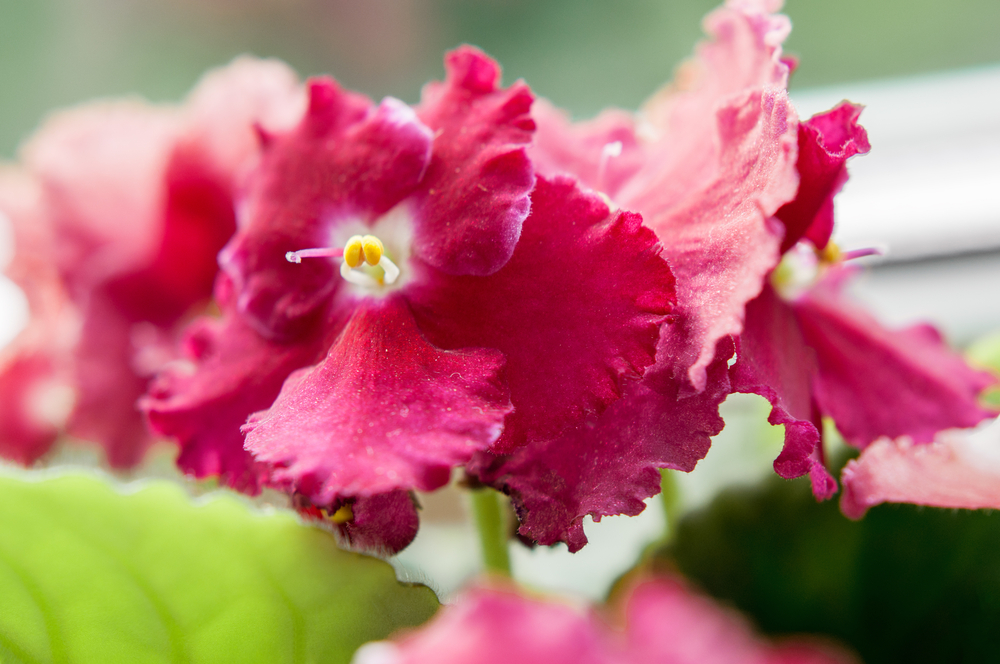
by Anastacie on Shutterstock
1) African violets
African violets are available in various shades of violet, lavender, pink and white. You can buy them in bloom at your local greenhouse or by the seed, which typically mature in 75 days.
These flowering plants grow best in bright, indirect sunlight close to a west or south-facing window. They need well-drained, well-aerated soil. You can use all-purpose potting soil or make your own mixture. An effective combination is one part leaf mold, one part peat moss, one part sand and two parts topsoil. Peat- vermiculite and peat-perlite are also good choices. You can make a blend with equal parts soil, peat moss and horticultural perlite.
To know when it’s time to water them, push your finger into the top of the soil. If the surface feels dry, apply some water. Use lukewarm water and use enough so it drains out of the bottom of the pot and a thin layer is left over. Wait about 20 to 30 minutes before pouring out the remaining water.
Pruning these flowers promotes healthy growth. To do this, pinch off dead, damaged leaves or flowers with your fingers.

Photos by fon.tepsoda on Shutterstock.
2) Amaryllis
Though you can purchase a fully blooming amaryllis, they are often bought by the bulb. Larger bulbs will typically produce two, sometimes three flowering stems. Amaryllis is available in solid or striped varieties ranging from pink, white, red, or orange.
If you buy these flowers in bulbs, they’ll bloom in eight to ten weeks. Sterile potting soil with good drainage is key with these houseplants. The container you choose to plant it in should be one inch wider than the widest part of the bulb and at least twice as tall as the bulb.
When you plant the bulbs, leave about one third of it exposed above the soil. Water this plant when you notice that the top two inches of soil become dry. Provide it with enough water so that there’s a thin layer draining out of the bottom. Keep it in bright direct sunlight until it begins to bloom. After that, bright, indirect sunlight is best.
When the flowers fade, cut off the flower stalk with scissors or a knife, one to two inches above the bulb.
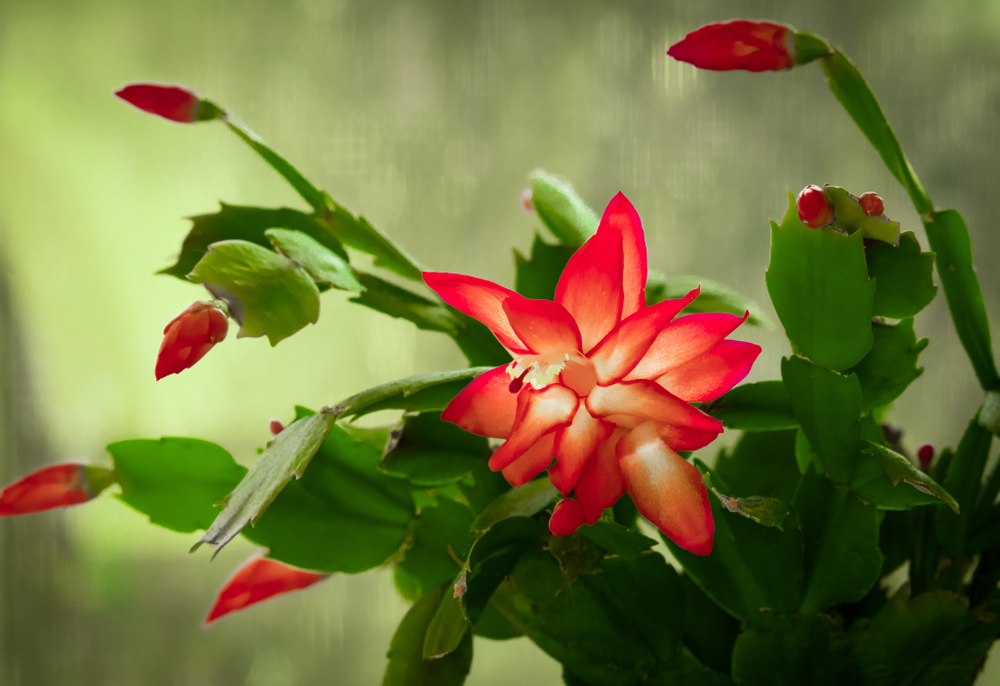
by LanaG on Shutterstock.
3) Christmas cactus
Christmas cacti are popular winter houseplants that come in blooming varieties of red, pink, purple, yellow or white. They are usually bought as plants, but can be propagated by taking a “y” shape cutting from a healthy stem. When taking a cutting, place it in soil that covers about a quarter of its full length.
Indirect sunlight for no more than eight hours each day is best. North- or east-facing windows are good options. Too much direct sun can cause their leaves to burn. A good indicator of knowing whether or not it is receiving too much sun is if its leaves start turning red. While you might think this creates a nice “Christmas-y” effect, it’s not what we want here.
They need moist soil with good drainage. Apply water in small amounts when the top inch of soil is dry. Soil should never be saturated in water because too much water can cause root rot. Use normal potting soil with sand or small stones in the base of the pot. We’d also recommend that you use a potassium high fertilizer every two weeks.
Prune the plants once they finish blooming by twisting two or three stem sections off each branch on about half of the plant.
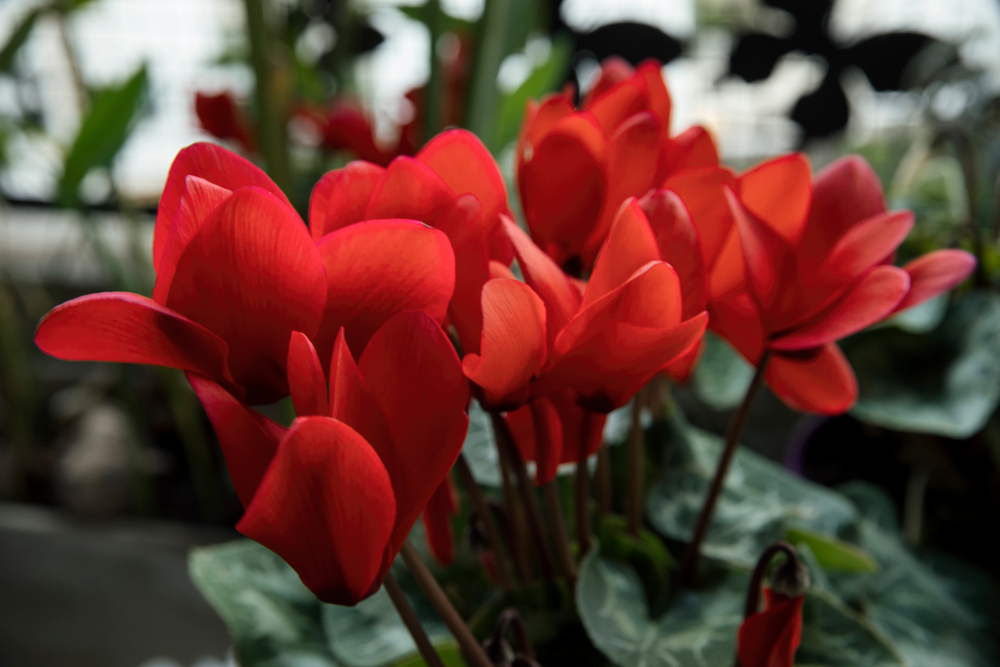
by Gonzalo de Miceu on Shutterstock
4) Cyclamen
Cyclamen can be purchased by seeds or as plants ready for some tender loving care. Their ruffled flowers are available in a variety of whites, reds and purples.
If you opt for cyclamen seeds, soak the seeds in warm water for 12 to 24 hours before planting them in a pot with a fine layer of compost. Cover your pots to block the light and place them in a cool dark room (60-63° F is an ideal temperature). Though it typically takes a few months for seeds to sprout, check on them periodically. Throughout this time, it’s important that your soil is kept moist. Once they’ve sprouted or are in plant form, they prefer direct light or bright indirect light. Choose an east or north-facing window to place them by, if possible.
These plants are finicky about their water intake. They can easily start to droop if they’re under watered, but overwatering can result in root rot. Water your plant only when the top layer of soil is dry and do not get any water on its leaves or stems. It should also be kept in potting soil with a container that has plenty of drainage out the bottom.
When the plants start to turn yellow and their leaves fall off, it means it is going into a dormant state. Cut dead looking stalks off the base of the plant using scissors or a knife. You will need to place it in a cool dark place for a few months before it starts to bloom again. The soil should be kept moist, but not wet during this period.
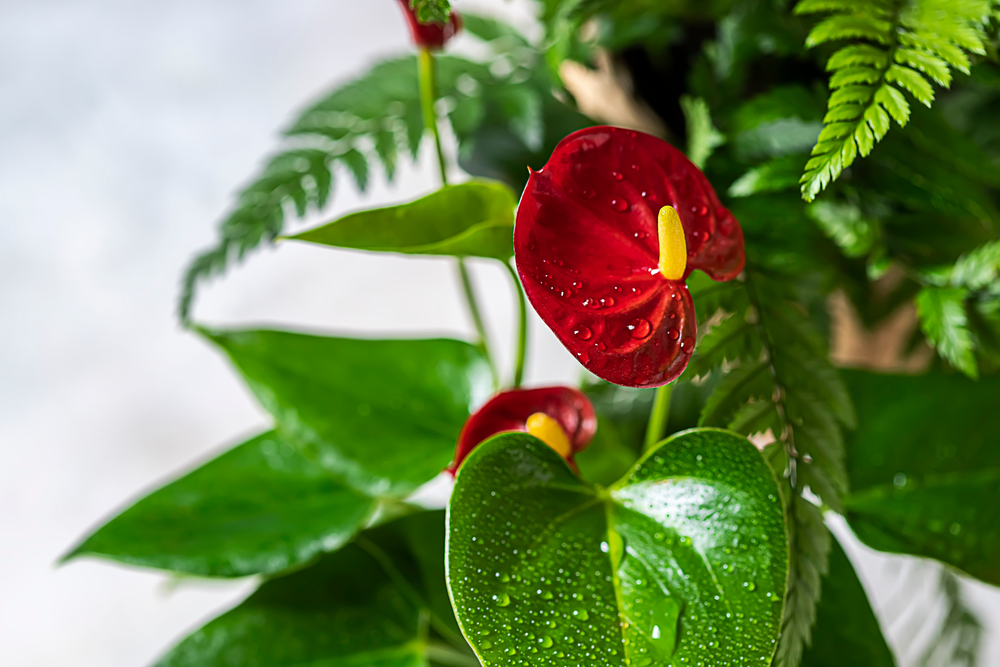
by Gulsina on Shutterstock
5) Anthurium
These plants, also known as Laceleaf, produce flowers and come in red, pink or white. You can purchase them at your local greenhouse or garden center. The easiest way to propagate them is with a cutting of at least two sets of leaves that is at least six inches long.
Before planting your cutting you’ll need to dip the end of it into rooting hormone and then plant it in your soil mix. Anthuriums need soil with good drainage, so we recommend an equal part mix of peat moss, leaf mold and sand or perlite, peat moss and bark. Water your cutting only when the first inch of soil becomes dry to touch and mist it weekly. You should also use this rule if you were caring for a full plant. You should see new growth on your cutting within four to six weeks.
Anthuriums need to be placed in an area that has bright, indirect light. They should also be fertilized once a month using a product that is high in phosphorus.
When their flowers start to fade, cut them at the base of the stem. It’s important to keep these plants away from children or dogs, as they are poisonous if ingested. Be sure to wash your hands after caring for these plants.
I love the suggestions for Christmas plants other than poinsettias.
The plants you mentioned definitely are favorites we grew in our greenhouses along with Kalanchoe and Paper Whites. I loved this time of year at the nursery/garden center, growing so many varieties and colors of Poinsettia and all the other tropicals, smelling the cut trees and wreathes, great memories.
How cool I love plants my yard’s overrun with plants I rented three or four acres don’t know how long we’ll be here but until then I’ve got my plants thanks for my subscription to a weekly mailing from modern farmer have a nice day everyone yours truly.???